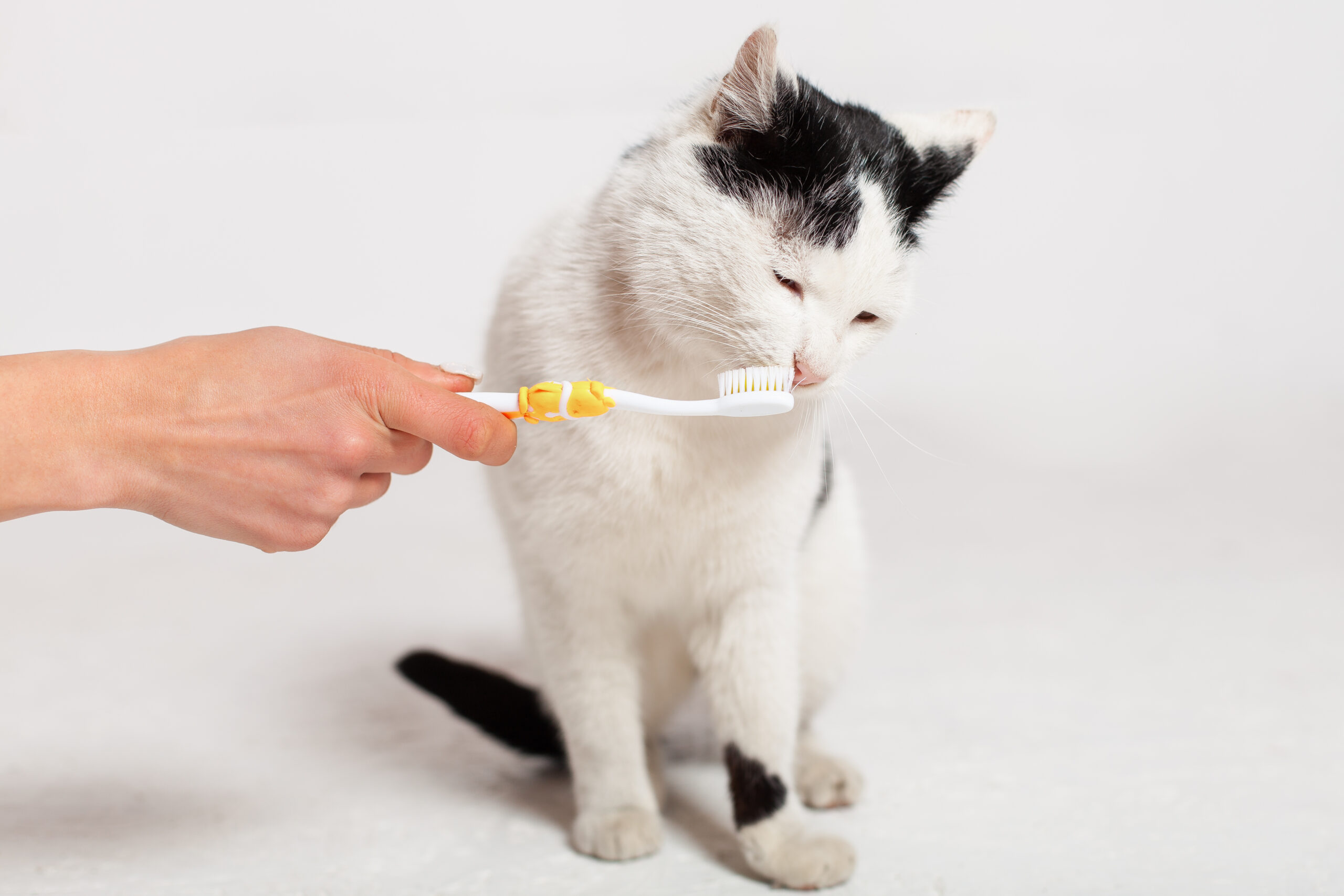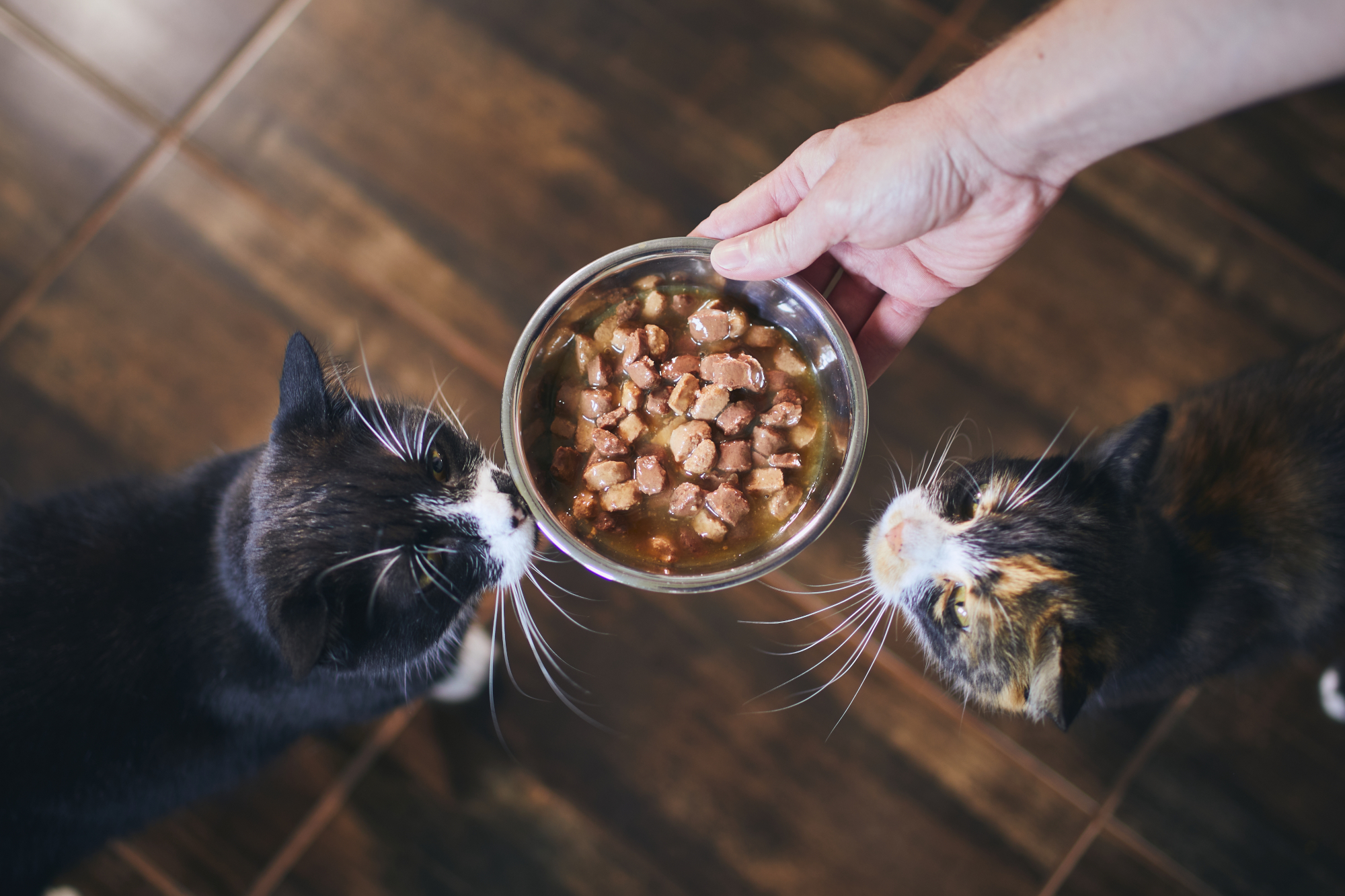As cat owners, we understand the basics of pet care. We give our cats a steady supply of healthy food and clean drinking water. We change their litter often. We play with them daily, and we take them to the vet if they’re under the weather. But there’s one aspect of caring for a cat that’s often overlooked: dental health.
Dental care is a vital part of looking after a cat, and yet many pet owners may not understand the need to take the time to ensure their cat’s mouth and teeth are in good condition. Sadly, this can often lead to dental diseases, some of which have serious health implications.
The good news? A number of cat dental diseases are preventable, meaning you simply need to keep up with some basic care to protect your furry friend. In this guide, we cover 5 of the most common and the most preventable dental diseases in cats, explaining the steps you need to take to ensure your pet doesn’t face them in the future.
1: Tartar and Plaque
Though not technically a dental disease in its own right, tartar and plaque build-up deserve special mention because they are the source of countless dental issues in animals. Just like humans, cats can develop plaque on their teeth over time without regular brushing.
Plaque is a thin film on the teeth that can harbour thousands of bacteria, creating the perfect breeding ground for more serious dental problems. When plaque is left unchecked, it can pick up minerals from the saliva and gums, hardening into tartar or calculus. Calculus creates a rough, uneven surface on the teeth, offering more places for bacteria to grow inside the mouth. Tartar’s uneven surface is also perfect for more plaque to stick to, meaning the issue will simply worsen with time and possibly develop into dental disease.
Although some plaque is removed from the teeth naturally as your cat eats or licks their teeth with their rough tongue, the only way to completely prevent plaque build-up is with regular toothbrushing.
2: Gingivitis
Odds are, you’ve heard of gingivitis in humans. This condition is characterized by inflammation of the gums caused by excess plaque buildup, causing redness, swelling, and mouth pain. Sadly, gingivitis affects cats just as readily as people—bacteria from the mouth triggers your cat’s immune system, leading to inflammation in the mouth. Gingivitis is known to adversely contribute to other diseases such as heart disease, kidney disease, and diabetes.
Gingivitis is reversible with the proper care—usually having the teeth scaled, polished, and other prophylactic treatments administered during a dental cleaning under anesthesia. However, the best way to protect your cat from gingivitis is with prevention—namely, regular toothbrushing (where possible) at home. By prioritizing preventative care, you’ll protect your pet from this painful dental disease.
3: Stomatitis
Feline chronic gingivostomatitis (FCGS), or simply stomatitis, is a serious condition caused by oral inflammation. The underlying causes of stomatitis are not completely understood, but one theory is that the cat has an adverse reaction to the plaque and bacterial buildup in their own mouth. Left untreated, stomatitis can cause serious pain and greatly affect your cat’s quality of life.
Treating a case of stomatitis usually involves a dental procedure under anesthesia, the use of antibiotics, pain medication, and anti-inflammatories, or even tooth extraction in severe cases. Be sure to read our guide on signs your cat needs dental care right away for more info.
Fortunately, you can reduce your cat’s chances of dealing with this painful condition by brushing their teeth and doing an oral rinse daily.
4: Tooth Resorption
When we humans don’t care for our teeth, we run the risk of developing cavities. Cats, on the other hand, don’t get cavities, but instead get resorptive lesions. This is the most common dental issue we see in cats under our care—the structure of the tooth begins to break down from the inside out, sometimes leading to the loss of the tooth crown and covering of the root by the gums.
Tooth resorption is sometimes called cervical line lesions or feline odontoclastic resorptive lesions. In severe cases, your vet may have to extract affected teeth surgically. The exact cause of tooth resorption is still unknown, but we do know that daily dental care, including brushing and oral rinsing (by using water additives), is a good way to reduce your cat’s chances of dealing with this painful, life-affecting disease.
5: Periodontitis
Periodontitis is a condition directly caused by untreated tartar, plaque, and gingivitis. While gingivitis, plaque, and tartar build-up can be reversed, periodontitis cannot, which explains why prevention is so essential. Periodontitis causes severe tissue damage to the gums, the ligaments connecting the teeth and gums, and even the bone underneath. This causes loss of tooth support, which can lead to tooth loss over time. To treat periodontitis, your vet will need to perform an in-depth oral cleaning above and below the gum line while your cat is under anesthesia. They’ll also take x-rays to diagnose any bone loss and decide if any teeth will need to be extracted.
Periodontitis can affect cats as young as one year old, though it becomes more likely as your cat gets older. Because periodontitis is irreversible, the best way to address it is with preventative care. Through daily brushing and water additive oral rinsing, you’ll help stop plaque and tartar from building up and causing gingivitis, which will help ensure you don’t have to deal with periodontitis later on.
Caring for Your Cat’s Dental Health
As you can see, there are a number of cat health issues that can arise due to poor oral health. That’s why it’s so important to take proactive action with dental care rather than waiting for a problem to present itself. Plaque hardens into calculus after about three days on the tooth, at which point it’s almost impossible to remove with a toothbrush.
We recommend brushing your cat’s teeth every day with a tooth gel or toothpaste designed specifically for cats. Never use tooth products intended for humans on your cat, as some may actually be toxic to your pet due to the presence of fluoride.
Some cats won’t allow toothbrushing, but there are still ways to help protect them from dental disease. For instance, you can try wiping your cat’s teeth with a gauze pad every couple of days to help cut back on plaque build-up. Your vet can also recommend products designed to support your cat’s dental health, including special treats and oral rinses. They may also suggest a supplement be added to your cat’s water which will help reduce bad breath, kill bacteria in the mouth, and cut down on plaque buildup. There are other products your vet may recommend, depending on your cat’s needs.
It is very important to understand that we should never forcibly attempt to brush or wipe a cat’s teeth. The stress caused by subjecting a cat to unwanted or resisted actions can lead to other problems related to stress and anxiety. In such situations, a veterinary dental care visit is a lot less stressful and leads to significantly better outcomes.
Beyond at-home care and using vet-provided treatments, we suggest taking your cat in for an oral cleaning at least once a year, or as often as every six months. This procedure gives your veterinary team the chance to clean the teeth thoroughly, prevent dental disease, and catch any potential dental health issues early on.
Creative Commons Attribution: Permission is granted to repost this article in its entirety with credit to Hastings Veterinary Hospital and a clickable link back to this page.






